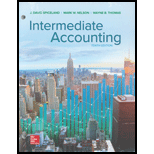
Use of ratios to compare two companies in the same industry
• LO4–10
Presented below are condensed financial statements adapted from those of two actual companies competing in the pharmaceutical industry—Johnson and Johnson (J&J) and Pfizer, Inc. ($ in millions, except per share amounts).
Required:
Evaluate and compare the two companies by responding to the following questions. Note: Because two-year comparative statements are not provided, you should use year-end balances in place of average balances as appropriate.
1. Which of the two companies appears more efficient in collecting its
2. Which of the two firms had greater earnings relative to resources available?
3. Have the two companies achieved their respective
4. From the perspective of a common shareholder, which of the two firms provided a greater rate of return?
5. From the perspective of a common shareholder, which of the two firms appears to be using leverage more effectively to provide a return to shareholders above the rate of return on assets?
Balance Sheets
($ in millions, except per share data)
| J&J | Pfizer | |
| Assets: | ||
| Cash | $ 5,377 | $ 1,520 |
| Short-term investments | 4,146 | 0,432 |
| Accounts receivable (net) | 6,574 | 8,775 |
| Inventories | 3,588 | 5,837 |
| Other current assets | 3,310 | 3,177 |
| Current assets | 22,995 | 29,741 |
| Property, plant, and equipment (net) | 9,846 | 18,287 |
| Intangibles and other assets | 15,422 | 68,747 |
| Total assets | $ 48,263 | $116,775 |
| Liabilities and Shareholders’ Equity: | ||
| Accounts payable | $ 4,966 | $ 2,601 |
| Short-term notes | 1,139 | 8,818 |
| Other current liabilities | 7,343 | 12,238 |
| Current liabilities | 13,448 | 23,657 |
| Long-term debt | 2,955 | 5,755 |
| Other long-term liabilities | 4,991 | 21,986 |
| Total liabilities | 21,394 | 51,398 |
| Capital stock (par and additional paid-in capital) | 3,120 | 67,050 |
| 30,503 | 29,382 | |
| Accumulated other comprehensive income (loss) | (590) | 195 |
| Less: |
(6,164) | (31,250) |
| Total shareholders’ equity | 26,869 | 65,377 |
| Total liabilities and shareholders’ equity | $ 48,263 | $116,775 |
| Income Statements | ||
| Net sales | $ 41,862 | $ 45,188 |
| Cost of goods sold | 12,176 | 9,832 |
| Gross profit | 29,686 | 35,356 |
| Operating expenses | 19,763 | 28,486 |
| Other (income) expense—net | (385) | 3,610 |
| Income before taxes | 10,308 | 3,260 |
| Tax expense | 3,111 | 1,621 |
| Net income | $ 7,197 | $ 1,639* |
| Basic net income per share | $2.42 | $ 0.22 |
* This is before income from discontinued operations.
Want to see the full answer?
Check out a sample textbook solution
Chapter 4 Solutions
INTERMEDIATE ACCOUNTING <CUSTOM LL>
 Fundamentals of Financial Management, Concise Edi...FinanceISBN:9781285065137Author:Eugene F. Brigham, Joel F. HoustonPublisher:Cengage Learning
Fundamentals of Financial Management, Concise Edi...FinanceISBN:9781285065137Author:Eugene F. Brigham, Joel F. HoustonPublisher:Cengage Learning Fundamentals of Financial Management, Concise Edi...FinanceISBN:9781305635937Author:Eugene F. Brigham, Joel F. HoustonPublisher:Cengage Learning
Fundamentals of Financial Management, Concise Edi...FinanceISBN:9781305635937Author:Eugene F. Brigham, Joel F. HoustonPublisher:Cengage Learning Financial Accounting: The Impact on Decision Make...AccountingISBN:9781305654174Author:Gary A. Porter, Curtis L. NortonPublisher:Cengage Learning
Financial Accounting: The Impact on Decision Make...AccountingISBN:9781305654174Author:Gary A. Porter, Curtis L. NortonPublisher:Cengage Learning Cornerstones of Financial AccountingAccountingISBN:9781337690881Author:Jay Rich, Jeff JonesPublisher:Cengage LearningCentury 21 Accounting Multicolumn JournalAccountingISBN:9781337679503Author:GilbertsonPublisher:Cengage
Cornerstones of Financial AccountingAccountingISBN:9781337690881Author:Jay Rich, Jeff JonesPublisher:Cengage LearningCentury 21 Accounting Multicolumn JournalAccountingISBN:9781337679503Author:GilbertsonPublisher:Cengage





